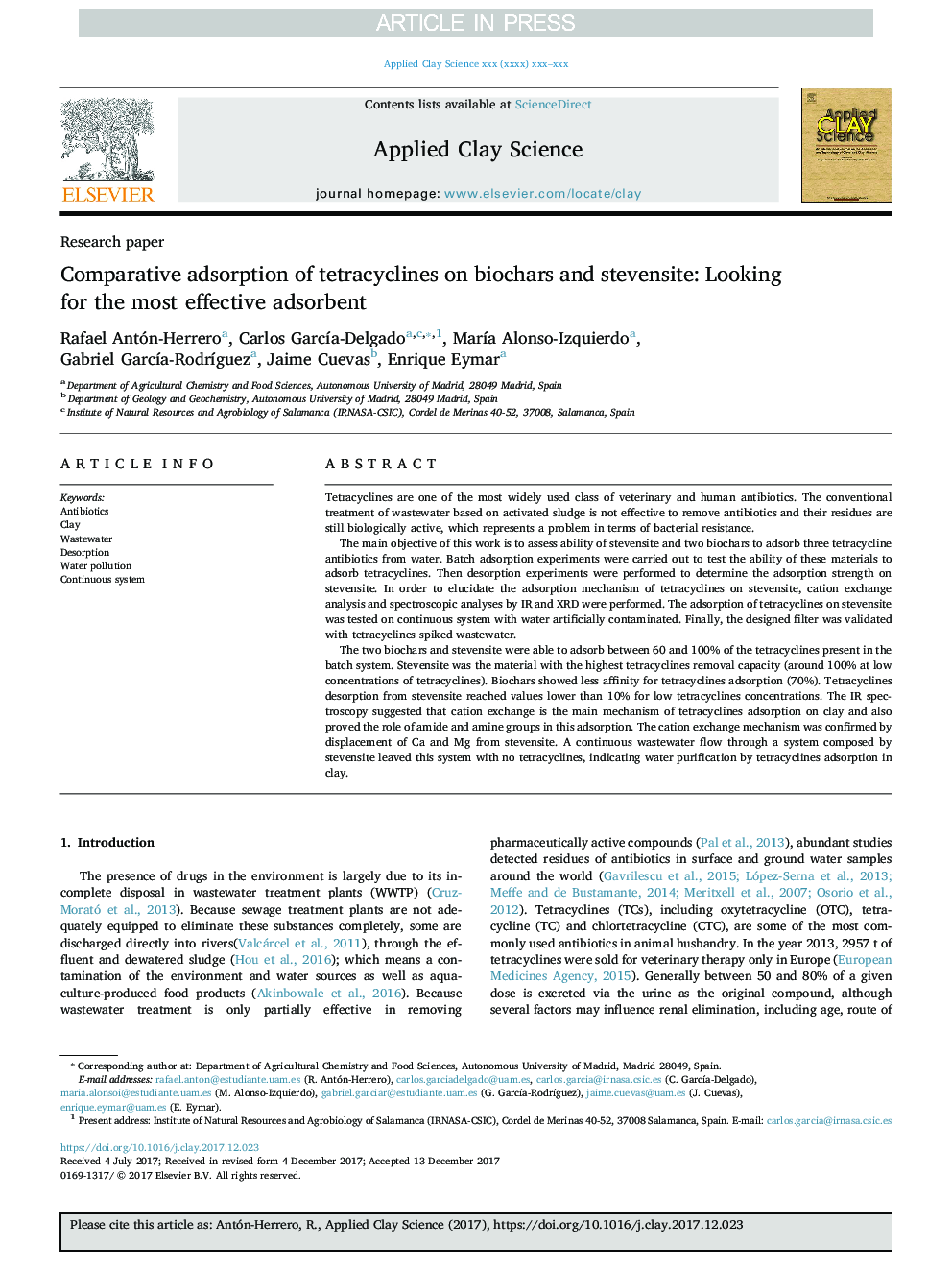| Article ID | Journal | Published Year | Pages | File Type |
|---|---|---|---|---|
| 8045870 | Applied Clay Science | 2018 | 11 Pages |
Abstract
The two biochars and stevensite were able to adsorb between 60 and 100% of the tetracyclines present in the batch system. Stevensite was the material with the highest tetracyclines removal capacity (around 100% at low concentrations of tetracyclines). Biochars showed less affinity for tetracyclines adsorption (70%). Tetracyclines desorption from stevensite reached values lower than 10% for low tetracyclines concentrations. The IR spectroscopy suggested that cation exchange is the main mechanism of tetracyclines adsorption on clay and also proved the role of amide and amine groups in this adsorption. The cation exchange mechanism was confirmed by displacement of Ca and Mg from stevensite. A continuous wastewater flow through a system composed by stevensite leaved this system with no tetracyclines, indicating water purification by tetracyclines adsorption in clay.
Related Topics
Physical Sciences and Engineering
Earth and Planetary Sciences
Geochemistry and Petrology
Authors
Rafael Antón-Herrero, Carlos GarcÃa-Delgado, MarÃa Alonso-Izquierdo, Gabriel GarcÃa-RodrÃguez, Jaime Cuevas, Enrique Eymar,
